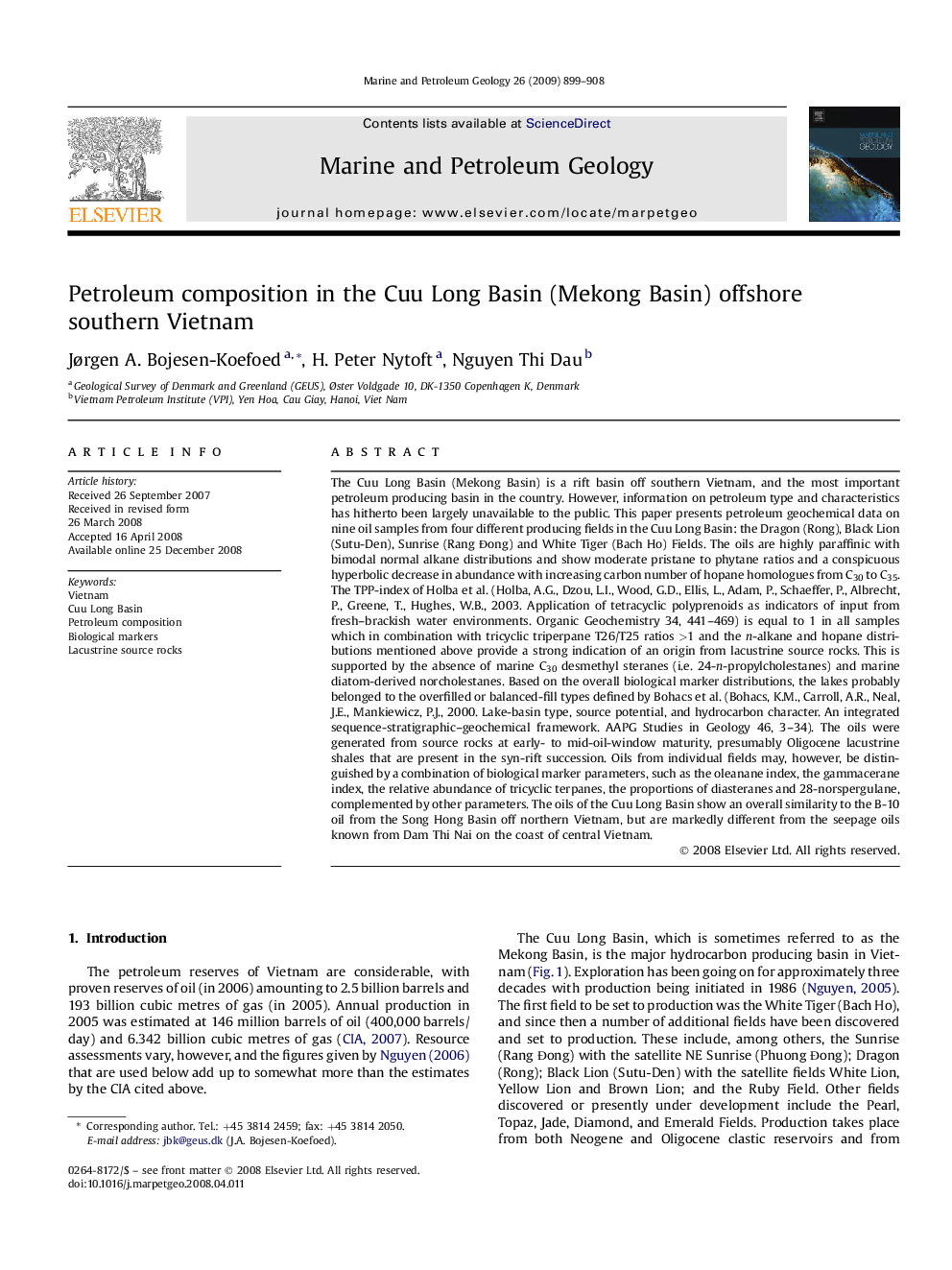| Article ID | Journal | Published Year | Pages | File Type |
|---|---|---|---|---|
| 4696619 | Marine and Petroleum Geology | 2009 | 10 Pages |
The Cuu Long Basin (Mekong Basin) is a rift basin off southern Vietnam, and the most important petroleum producing basin in the country. However, information on petroleum type and characteristics has hitherto been largely unavailable to the public. This paper presents petroleum geochemical data on nine oil samples from four different producing fields in the Cuu Long Basin: the Dragon (Rong), Black Lion (Sutu-Den), Sunrise (Rang Đong) and White Tiger (Bach Ho) Fields. The oils are highly paraffinic with bimodal normal alkane distributions and show moderate pristane to phytane ratios and a conspicuous hyperbolic decrease in abundance with increasing carbon number of hopane homologues from C30 to C35. The TPP-index of Holba et al. (Holba, A.G., Dzou, L.I., Wood, G.D., Ellis, L., Adam, P., Schaeffer, P., Albrecht, P., Greene, T., Hughes, W.B., 2003. Application of tetracyclic polyprenoids as indicators of input from fresh–brackish water environments. Organic Geochemistry 34, 441–469) is equal to 1 in all samples which in combination with tricyclic triperpane T26/T25 ratios >1 and the n-alkane and hopane distributions mentioned above provide a strong indication of an origin from lacustrine source rocks. This is supported by the absence of marine C30 desmethyl steranes (i.e. 24-n-propylcholestanes) and marine diatom-derived norcholestanes. Based on the overall biological marker distributions, the lakes probably belonged to the overfilled or balanced-fill types defined by Bohacs et al. (Bohacs, K.M., Carroll, A.R., Neal, J.E., Mankiewicz, P.J., 2000. Lake-basin type, source potential, and hydrocarbon character. An integrated sequence-stratigraphic–geochemical framework. AAPG Studies in Geology 46, 3–34). The oils were generated from source rocks at early- to mid-oil-window maturity, presumably Oligocene lacustrine shales that are present in the syn-rift succession. Oils from individual fields may, however, be distinguished by a combination of biological marker parameters, such as the oleanane index, the gammacerane index, the relative abundance of tricyclic terpanes, the proportions of diasteranes and 28-norspergulane, complemented by other parameters. The oils of the Cuu Long Basin show an overall similarity to the B-10 oil from the Song Hong Basin off northern Vietnam, but are markedly different from the seepage oils known from Dam Thi Nai on the coast of central Vietnam.
